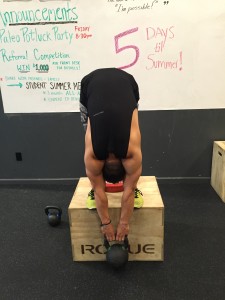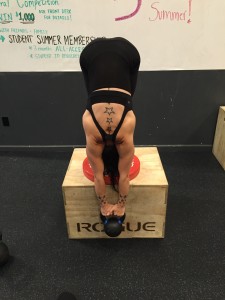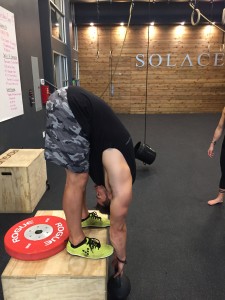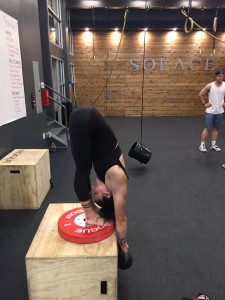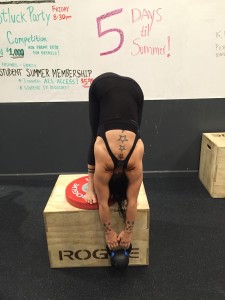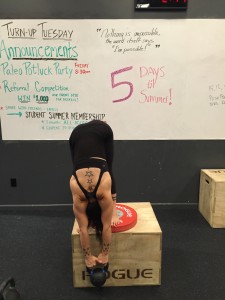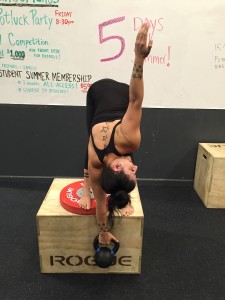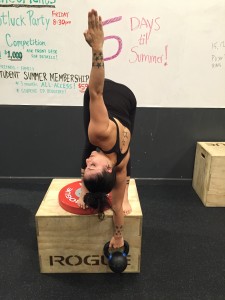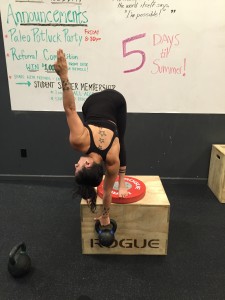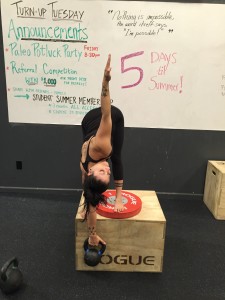Electric Stimulation: Should I get a Marc Pro or a Compex?
What is E-Stim? By now you have seen a pic or two on social media of crossfit athletes with little electrode pads hooked up to them getting zapped by a tiny little machine. What is the deal with these things? Is it all hype or do they really work and should you get one?
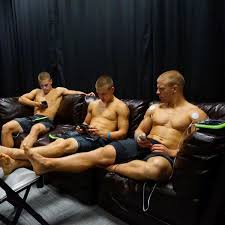
I am not expert on these matters and I don’t have any strong scientific evidence to base my opinions on. I have been playing with the Marc Pro and the Compex unit for the last month and will tell you what I found. In my opinion, both machines are excellent and worth the investment but both machines are different and serve different functions. I give several examples below of instances where I have had success with one machine or the other. Depending on your particular needs, figure out which situation sounds most like you and choose from there.
The two most popular machines are the Marc Pro and the Compex. I have had the opportunity to try both of them and here’s what I found.
What’s in the box?
I have had the Mobilitywod edition Marc Pro for over a year and really like it. It comes with the base unit, charger, 5 packs of electrodes, cables, instructions and carrying case. It is the simplest of machines. You connect the electrodes to the cables and plug them into the base unit, attach the electrodes to the areas you want to work and then turn up the knobs to the desired intensity: zero to nine (Oh how I wish it went to 11!). There is nothing else to do. If you like complicated gadgets, then the Marc Pro will disappoint you. If you want something you can set and forget, then this is the unit for you.
I have had a Compex Super Elite on loan for the last month and it comes with the base unit, 4 cables, 4 square pads, 2 rectangular pads, a charger, belt clip, instructions and pad placement guide as well as a carry tote. The tote doesn’t offer any protection and is too small to hold all the accessories. Despite that, the Compex is more compact than the MarcPro, feels more substantial and the pads are thicker, stickier and last longer. Also the pads have convenient snaps that are easier to connect and disconnect. By contrast, the marcpro pads have male to female connectors that are harder to connect and disconnect.
Based on craftsmanship the Compex wins. The Compex has more settings than the MarcPro. The settings are set & forget, but the Super Elite model has: potentiation, resistance, endurance, strength, explosive strength, recovery, recovery plus. It’s overwhelming and I couldn’t find a clear explanation of the differences. Each setting varies in time and intensity and the contraction algorithms are all different. Additionally, the Compex has 4 intensity buttons to raise or lower the intensity of each pad.
Based on output strength and the potential for unpleasant surprises, the Compex wins. You can quickly find yourself experiencing profound levels of discomfort as the Compex goes through various algorithms and zaps the heck out of your muscles.
But when it comes to whether or not to buy an E-Stim machine, it’s all about the results. I will share some great results I have had with these devices.
You want to prevent soreness.
I have been finding that if I do a healthy dose of self-myofascial release immediately post workout, I can prevent much of the Delayed Onset Muscle Soreness (DOMS) I usually get. That being said, sometimes it is simply hard to squeeze in 30 minutes of rolling on my Yoga Tune Up® balls immediately after working out. Sometimes I find myself on a long train or plane ride post workout and rolling is a challenge. The Marc Pro has been a lifesaver. I can put the pads on and flush the lactic acid from my legs and avoid the DOMS.
For example, I did a workout that involved a LOT of squats (“Bring Sally Up”) with my 6pm class, then I taught 2 more classes and took an hour long train ride. When I got home at 11pm, I placed the electrodes on my quads (per the included placement guide) and then ran it for about an hour. It totally prevented the usual DOMS that comes 48 hours past a brutal squat session. If you have a schedule where you cram workouts in where you get them and don’t always have that optimal time to roll and stretch, then the MarcPro is a great investment.
You have pain and swelling.
Inflammation is part of the bodies natural healing process, and we want to help it along. Ice actually delays the healing process. The bodies lymphatic system is stimulated by movement. Traditional coaches will tell there athletes to keep moving after long, painful efforts. After a long run, a cool down walk assists the lymphatic system in moving the waste products out of the muscles and keeps the oxygenated blood flowing into the area. This is another reason why some self-myofascial massage is also beneficial after a strenuous physical effort. However, there are times when more movement just hurts or the area is painful and tender. This is another instance where the MarcPro excels.
For example, I did a strenuous gymnastic session that involved pull-ups, swinging on the rings and other hanging exercises and my hands hurt really bad. In fact, I woke up in the middle of the night with my hands throbbing and feeling swollen. I got out of bed and grabbed the Marc Pro and placed an electrode in the middle of each palm and one further up my arm (as shown in the placement guide). I kept the intensity low and rested. After around thirty minutes my hands felt normal again and I regained fine motor control. I was able to fall back asleep and woke up and my hands felt great.
Healing an injury.
Occasionally you have an injury that requires you to remain immobilized for a period of time. You have to reconcile this with the fact that movement is the best to heal injured tissues. In these instances there are a few things that work well to aid in the healing process. Voodoo Floss compression bands are great for ankle, knee, shoulder and elbow injuries. A tight wrap around a swollen joint will often blunt the pain signal enough to allow the athlete to gently move through a range of motion (passively or actively) and assist the healing process. Some self-massage around the injured area (NOT ON the injured area) will often help increase circulation. As you guessed, some e-stim around the area helps tremendously.
I have an injured collar bone and doing heavy clean and jerks left me bruised and unable to move my shoulder without pain. I placed the pads on the sternoclavicular joint, the pec minor, the levator scapula and the high pec/subscapularis, essentially surrounding my injured collar bone. I set the marcpro to a low intensity and took a nap. The pain and swelling was reduced and I was able to move without pain after a few sessions.
In another example, I made the classic mistake a crossfit coach makes and demoed some moves in class without warming up. All night my pec was killing me. I definitely strained it. I tried to roll and stretch during the next 3 hours in between coaching athletes but to no avail. I went home and attached the Marc Pro to my pec and left it on for 45minutes. The pain was gone before I went to bed. I woke up and I was sore but the pain was gone.
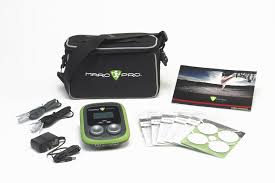
More fun things to try with the MarcPro
I have seen Brian MacKenzie do some interesting work with the Marc Pro (https://youtu.be/jTMDODkTZ8Q) for immediate recovery during interval workouts. Also I have seen him use the MarcPro to increase muscle activation and proprioception. I am curious to try some of his protocols for the Marc Pro in these contexts.
Generally speaking, I am huge fan of the Marc Pro as recovery tool. If you are someone that works out hard and suffers from extreme muscle soreness and pain, then this is a smart investment. That being said, it is not a miracle cure. I have had the best results and the best recovery if I do my rolling and stretching, keep my diet clean, sleep and use the Marc Pro after especially hard sessions. This is not a magic machine that will fix your shitty squat and lower your “Fran” time, but it’s a great investment if you are training hard and looking for a way to improve your recovery game.
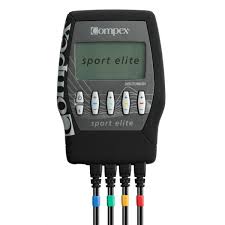 The Compex is a different animal altogether and a good compliment to the Marc Pro. It uses varying intensities and speeds and waveforms that are different than the Marc Pro. The Marc Pro pretty much just zaps you at a steady rhythm and you can adjust the intensity but not the speed or any other parameter. The Compex utilizes various algorithms that vary in speed, intensity and duration. For example, you’ll be sitting there all calm and suddenly the machine just zaps your muscle into an isometric contraction that immobilizes you and makes you feel like you’re cramping hard for about 5 seconds. It seems like it is a surprise every time it happens too. For all it’s power the Marc Pro takes advantage of a wavelength and algorithm that allows the muscles to relax and doesn’t leave them feeling fatigued. After a session with the Compex I feel like i just got a tiny workout in the area.
The Compex is a different animal altogether and a good compliment to the Marc Pro. It uses varying intensities and speeds and waveforms that are different than the Marc Pro. The Marc Pro pretty much just zaps you at a steady rhythm and you can adjust the intensity but not the speed or any other parameter. The Compex utilizes various algorithms that vary in speed, intensity and duration. For example, you’ll be sitting there all calm and suddenly the machine just zaps your muscle into an isometric contraction that immobilizes you and makes you feel like you’re cramping hard for about 5 seconds. It seems like it is a surprise every time it happens too. For all it’s power the Marc Pro takes advantage of a wavelength and algorithm that allows the muscles to relax and doesn’t leave them feeling fatigued. After a session with the Compex I feel like i just got a tiny workout in the area.
I tried both the ‘recovery’ setting and the ‘recovery plus’ setting, as well as all the other settings, and didn’t have the same result as the marcpro when it comes to preventing soreness. It worked but just not as well as the Marc Pro. So if battling soreness is a priority, I recommend the Marc Pro.
Although I didn’t get as good a result when it comes to soreness, I did get some other great results with the Compex.
Muscle Activation
I have pinched nerves in my neck and as a result my right arm is atrophied and weaker than my left arm. I have been using the Compex in conjuction with corrective exercises to stimulate my right arm and shoulder and have seen an increase in muscular size and strength in my right arm. For a person with similar injuries, I highly recommend getting a Compex to help your injury.
The Compex in concert with corrective exercises is a great tool for getting the right muscles to fire and can be used to enhance the athlete’s proprioception.
Muscle Relaxation
My right lat is always cramping which I assume is due to my pinched nerves and the fact that it has to compensate for my weaker right arm. Using the Compex on my right lat allows my right lat to relax and stop cramping. I have heard similar reports from people that say their backs are tight and sore all the time and they use the Compex to help the muscle release and relax. So if you suffer from cramping or muscles that always feel ‘locked’ or ‘tight’ then again I can recommend getting the Compex.
The Bottom Line
Do you really need one of these expensive machines? Chances are that you do not actually need to get one of these devices. If you are eating right, sleeping enough, doing enough myofascial release, then you are probably fine. If you are a competitive athlete training for an event, sitting/driving/traveling a lot, getting behind on sleep or diet or have some nagging injuries, then an investment in one of these devices is a good idea.
Which one you should you get? The Marc Pro is the clear choice for battling soreness and accelerating the healing process. The Compex is the choice if you need muscle activation and stimulation.

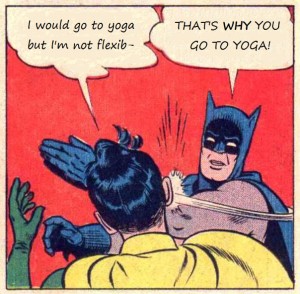
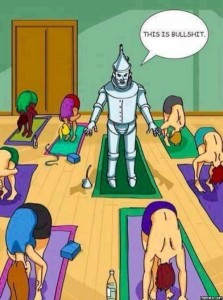


 The Compex is a different animal altogether and a good compliment to the Marc Pro. It uses varying intensities and speeds and waveforms that are different than the Marc Pro. The Marc Pro pretty much just zaps you at a steady rhythm and you can adjust the intensity but not the speed or any other parameter. The Compex utilizes various algorithms that vary in speed, intensity and duration. For example, you’ll be sitting there all calm and suddenly the machine just zaps your muscle into an isometric contraction that immobilizes you and makes you feel like you’re cramping hard for about 5 seconds. It seems like it is a surprise every time it happens too. For all it’s power the Marc Pro takes advantage of a wavelength and algorithm that allows the muscles to relax and doesn’t leave them feeling fatigued. After a session with the Compex I feel like i just got a tiny workout in the area.
The Compex is a different animal altogether and a good compliment to the Marc Pro. It uses varying intensities and speeds and waveforms that are different than the Marc Pro. The Marc Pro pretty much just zaps you at a steady rhythm and you can adjust the intensity but not the speed or any other parameter. The Compex utilizes various algorithms that vary in speed, intensity and duration. For example, you’ll be sitting there all calm and suddenly the machine just zaps your muscle into an isometric contraction that immobilizes you and makes you feel like you’re cramping hard for about 5 seconds. It seems like it is a surprise every time it happens too. For all it’s power the Marc Pro takes advantage of a wavelength and algorithm that allows the muscles to relax and doesn’t leave them feeling fatigued. After a session with the Compex I feel like i just got a tiny workout in the area.